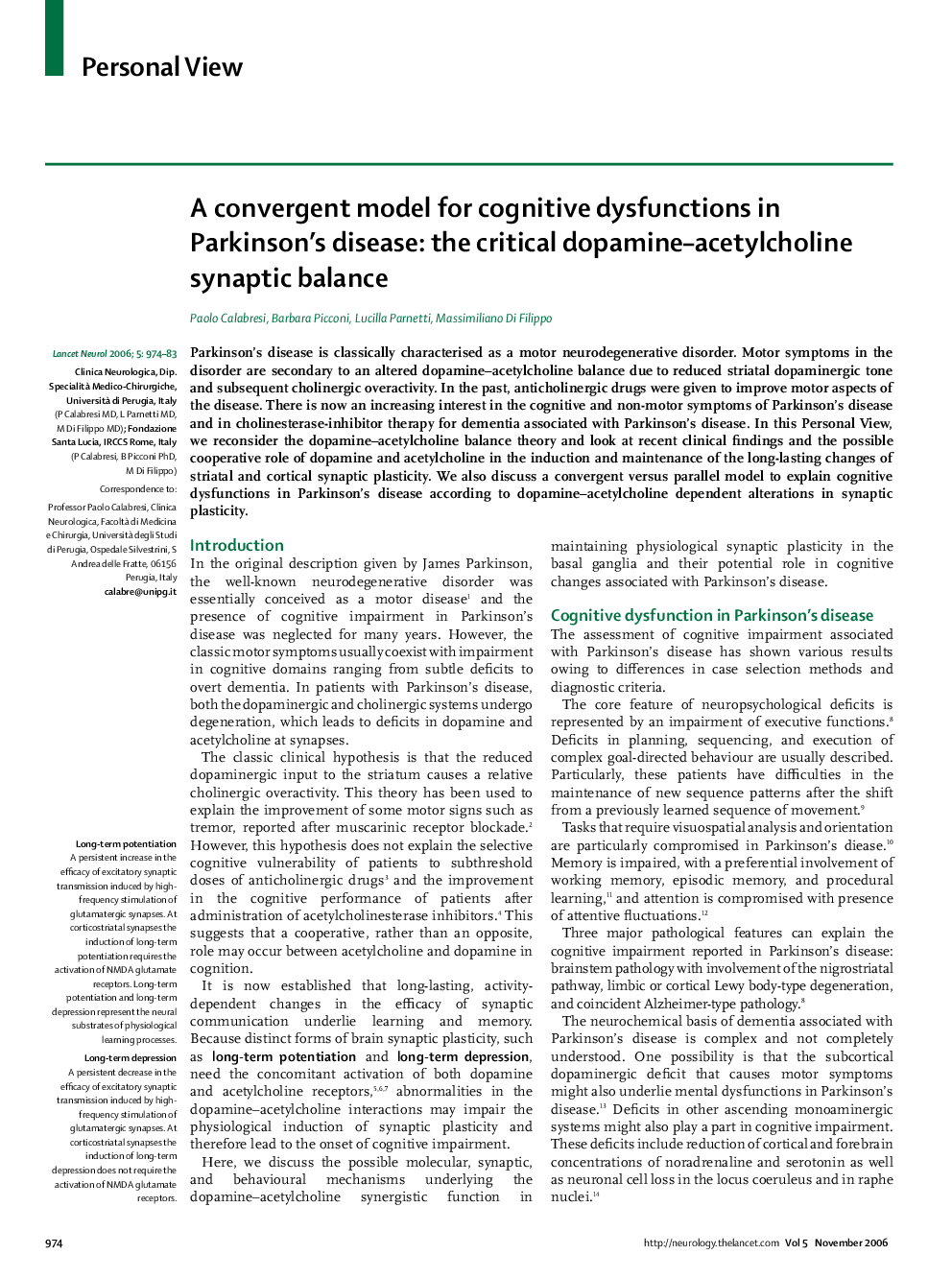| Article ID | Journal | Published Year | Pages | File Type |
|---|---|---|---|---|
| 3067972 | The Lancet Neurology | 2006 | 10 Pages |
SummaryParkinson's disease is classically characterised as a motor neurodegenerative disorder. Motor symptoms in the disorder are secondary to an altered dopamine–acetylcholine balance due to reduced striatal dopaminergic tone and subsequent cholinergic overactivity. In the past, anticholinergic drugs were given to improve motor aspects of the disease. There is now an increasing interest in the cognitive and non-motor symptoms of Parkinson's disease and in cholinesterase-inhibitor therapy for dementia associated with Parkinson's disease. In this Personal View, we reconsider the dopamine–acetylcholine balance theory and look at recent clinical findings and the possible cooperative role of dopamine and acetylcholine in the induction and maintenance of the long-lasting changes of striatal and cortical synaptic plasticity. We also discuss a convergent versus parallel model to explain cognitive dysfunctions in Parkinson's disease according to dopamine–acetylcholine dependent alterations in synaptic plasticity.
